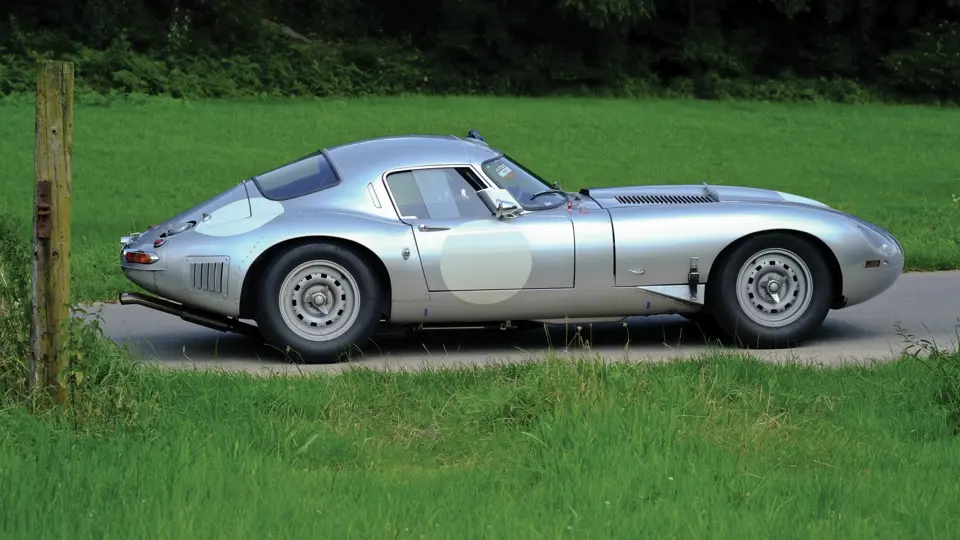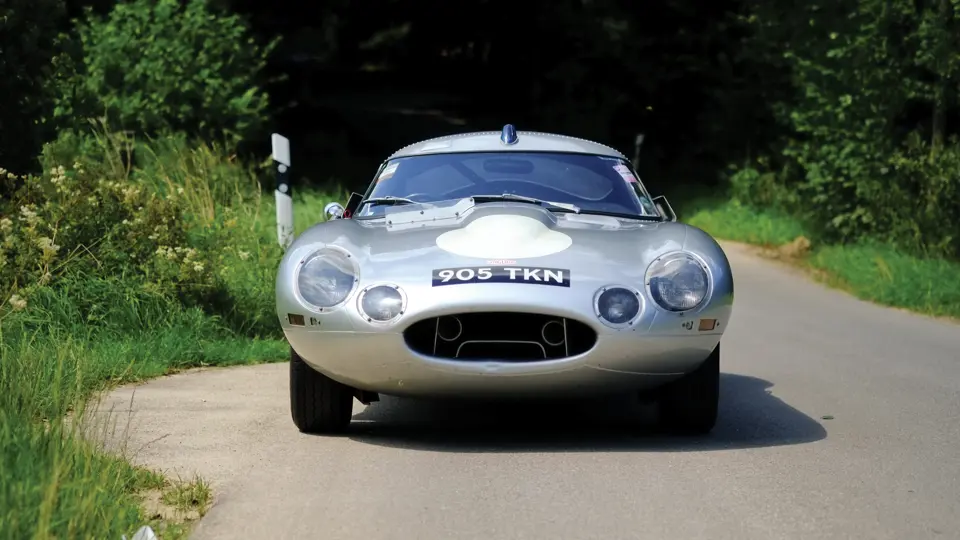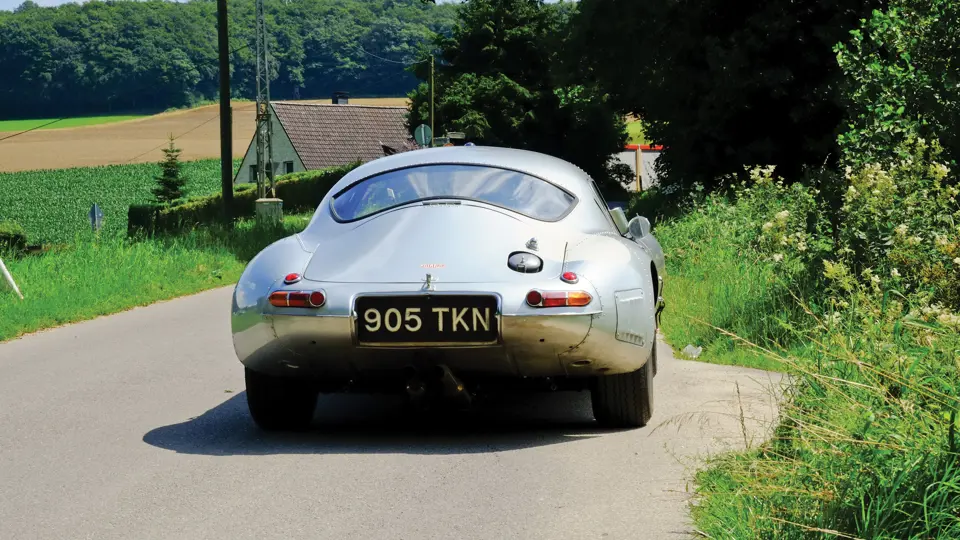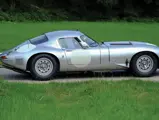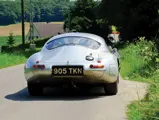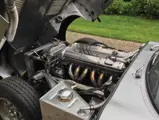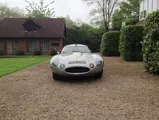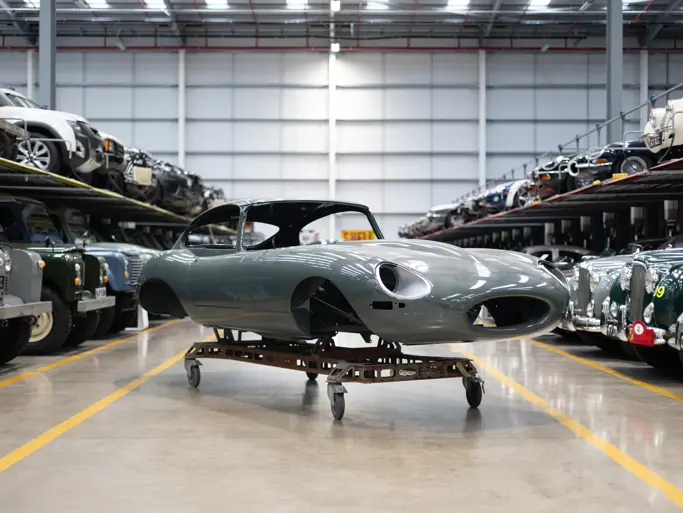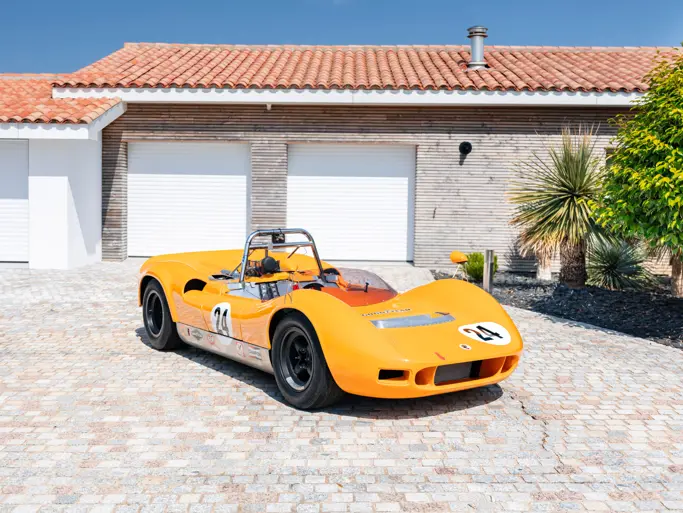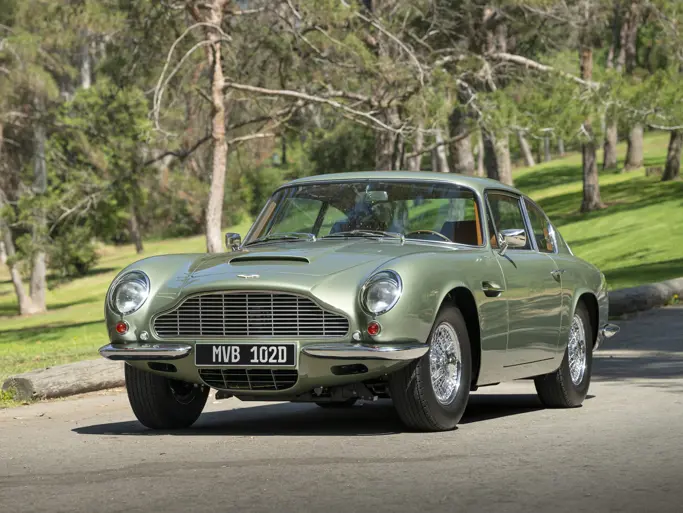Est. 320 bhp, 3,781 cc DOHC inline six-cylinder engine, four-speed manual transmission, torsion bar independent front suspension, coil-spring independent rear suspension, and four-wheel hydraulic disc brakes. Wheelbase: 2,440 mm
Jaguar built just a dozen of the famous all-aluminium lightweight E-Types for racing. Of these, the factory modified just one for Peter Lindner, the German Jaguar importer. After having taken delivery of the car in 1963, Peter Lindner and co-driver Peter Nöcker entered in the Nürburgring 1000 KM and lead the field for much of the race, even holding their own against the infamous Ferrari team. The following year saw the car return to Browns Lane, where Chief Designer Malcolm Sayer re-designed the car’s bodywork and carried out test sessions in MIRA’s wind tunnel. This resulted in a unique fastback-style coupé with near-perfect aerodynamics. Further modifications were made to the engine and mechanical system, resulting in an astonishing 340 brake horsepower and speeds reaching close to 170 mph at the 1964 24 Hours of Le Mans. Sadly, Lindner’s quest for greater speed ended in tragedy at Montlhéry, when he collided with a slower car and killed himself and several others.
The wreckage remained in storage for more than 20 years before Jaguar specialist Lynx was asked to restore it by owner Peter Kaus, of the noted Rosso Bianco Collection. After being displayed for some 25 years as a lightweight roadster, it was acquired in 2008 by Peter Neumark, who commissioned a 7,000 man-hour restoration to resurrect the iconic Low-Drag Coupé. After much fanfare, Lynx would produce a small handful of all-aluminium Lindner/Nöcker Low-Drag recreations, which were based on original drawings provided by Peter Nöcker. Aside from the aluminium chassis, they used all the correct components, including a steel engine block, a wide-angle head, dry sump, Lucas fuel injection, magnesium Dunlop wheels, and all-aluminium body construction. The result captures the flavour of the period and incorporates various modifications to enhance its performance, safety, comfort, and usability.
The body is built to the original Low Drag appearance, incorporating a new steel monocoque and updated chassis frames. The bonnet, doors, boot lid, rear wings, and roof were all hand-welded in 16-gauge aluminium to original specification, including the external riveting. The original steel-design windscreen surround encased the low drag, raked laminated safety glass from the original pattern. Driving lamps in the bonnet, a spring-loaded roof vent, a louvered vent panel over fuel pumps, and pit lamps only add to the authentic feel.
The engine has been hand-built by Lynx for road and track use. Its power has been optimised to provide a wide torque curve, with 320 brake horsepower at 5,800 rpm and 340 foot-pounds of torque at 3,800 rpm. Other engine highlights include an aluminium gas-flowed and blueprinted cylinder head, triple Weber carburettors, a lightened and balanced flywheel, a semi-competition clutch, and Lynx side-exiting side pipes.
The front and rear suspension are fully adjustable, whilst the FIA-approved ATL fuel cell in aluminium casing, the Monza-style fuel filler, the braised fuel lines, and the large diameter front and rear brake discs with multi pot callipers make the E-Type highly usable on the track. As one might expect from this no-comprise vehicle, the interior has been finished to the highest standard, and it includes Smiths gauges, a Moto-Lita steering wheel, semi-reclined bucket seats that were patterned off the original car, trimmed Connolly hide, four-point harnesses with quick release, and a carpeted floor, with quilted leather covering the transmission tunnel and rear bulkhead.
The current owner bought this Low-Drag E-Type, chassis 860416, in 2008 and has since commissioned a mechanical restoration. The engine was recently rebuilt to race specifications, as the car had previously been used on the road. The rear axle has been overhauled, along with all the rest of the suspension components, and a new roll cage has been fitted. The original-type Lucas fuel injection is also included with the car, in case the next owner wants to replace the Webers currently fitted. Most importantly, the car has got the current “bar code” FIA Historical Technical Papers, which ensure its entry at many of the world’s prestigious motor racing events.

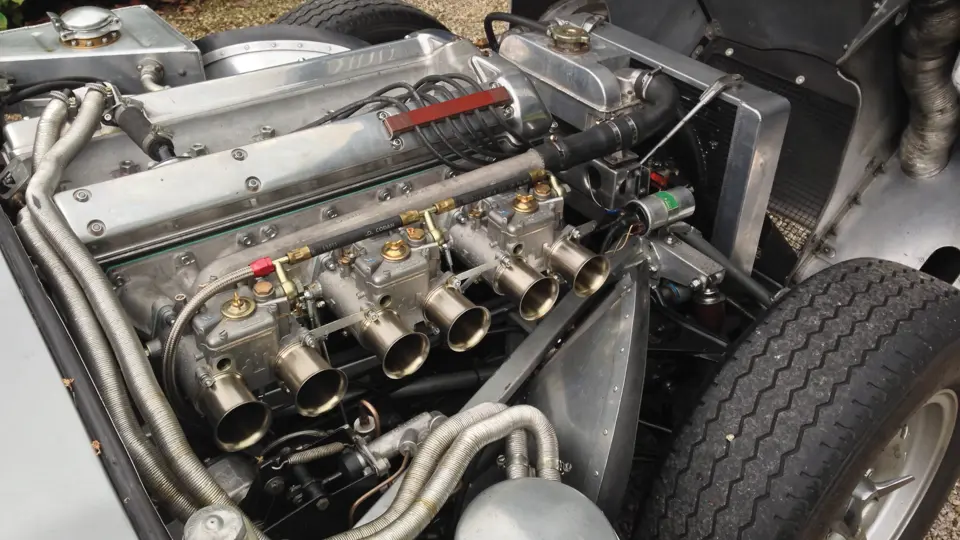


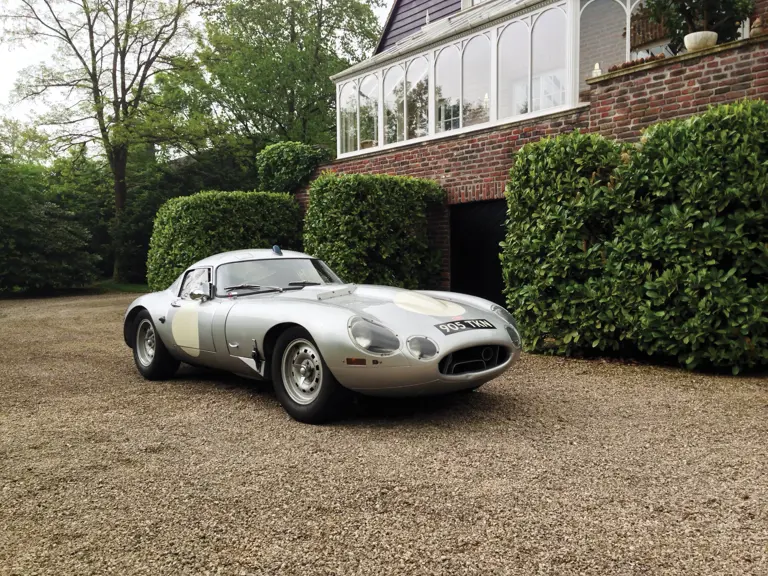
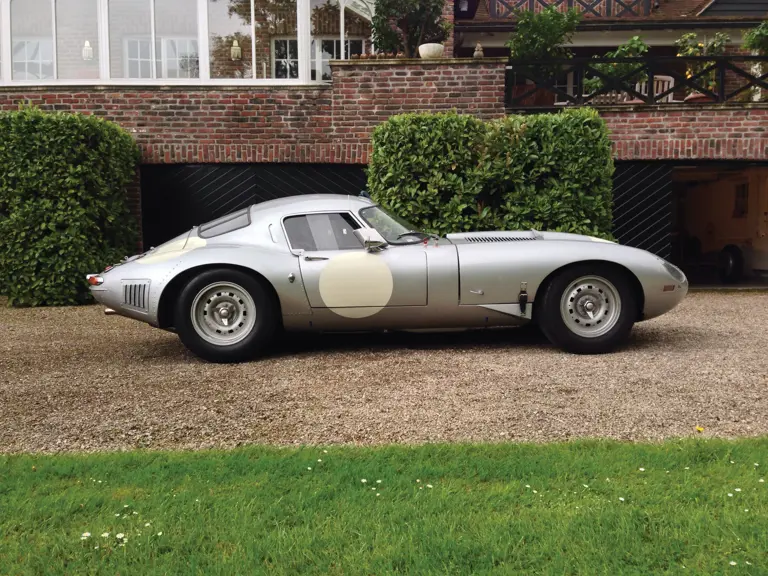
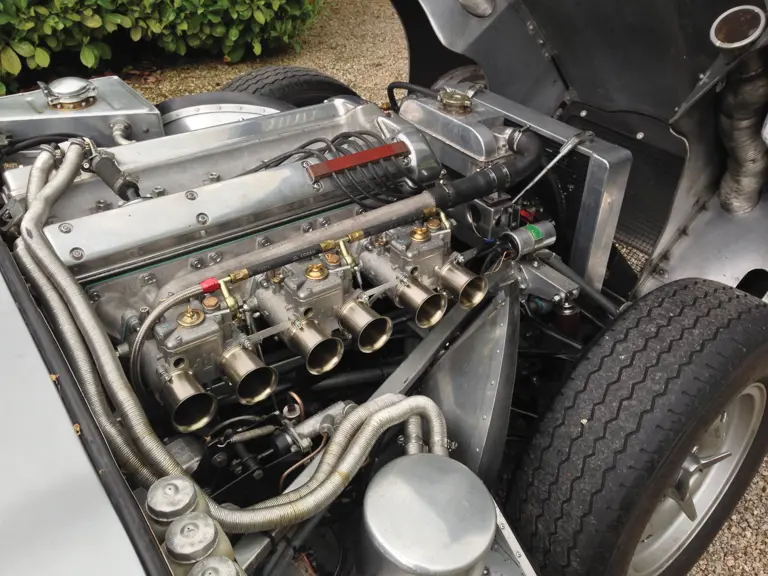
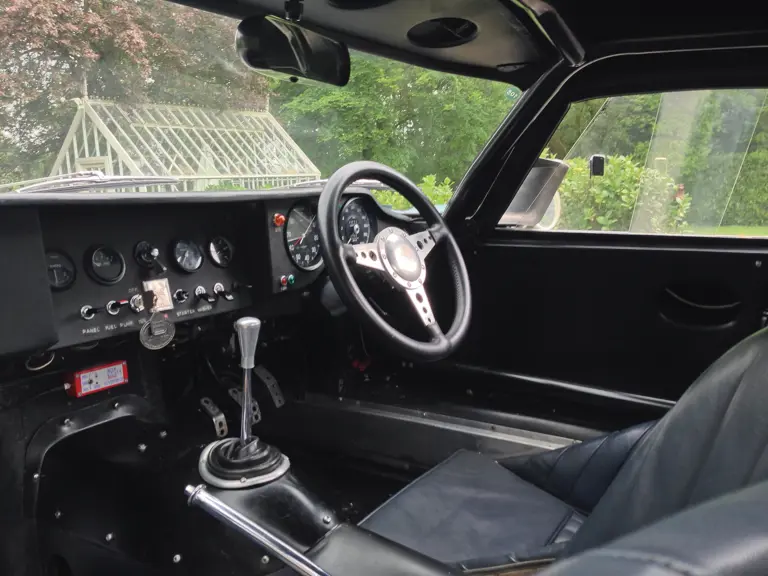
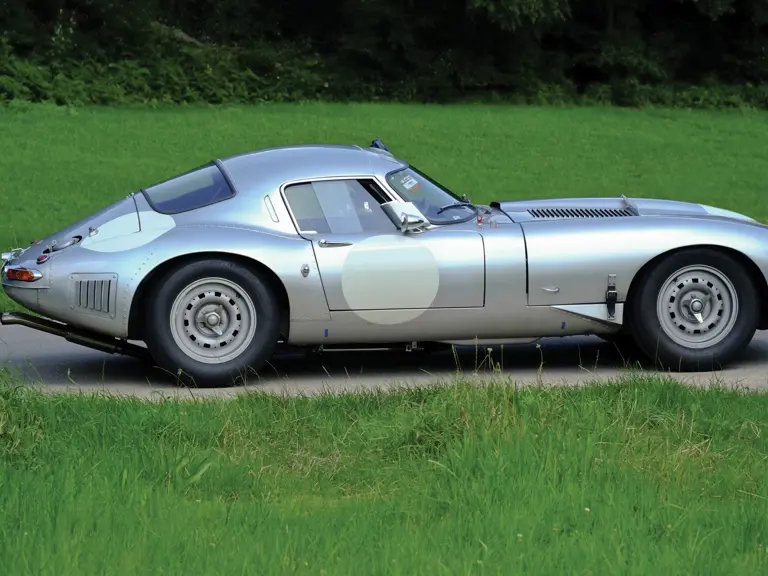
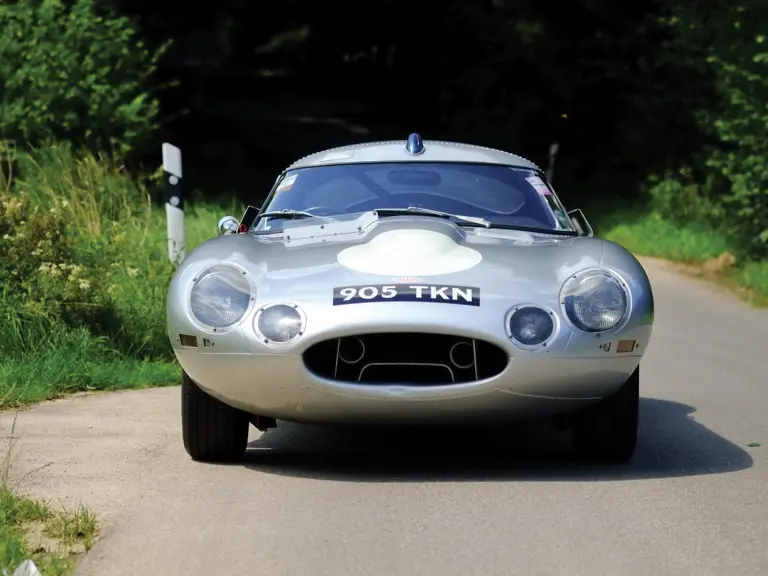
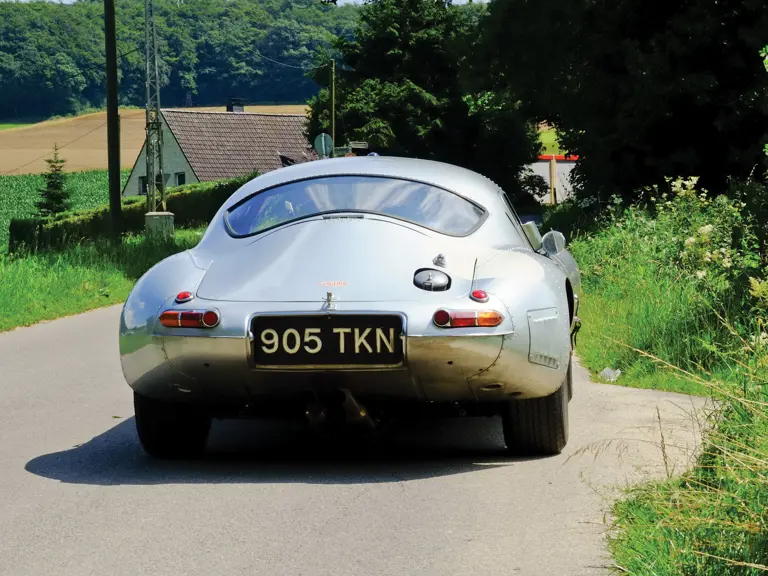

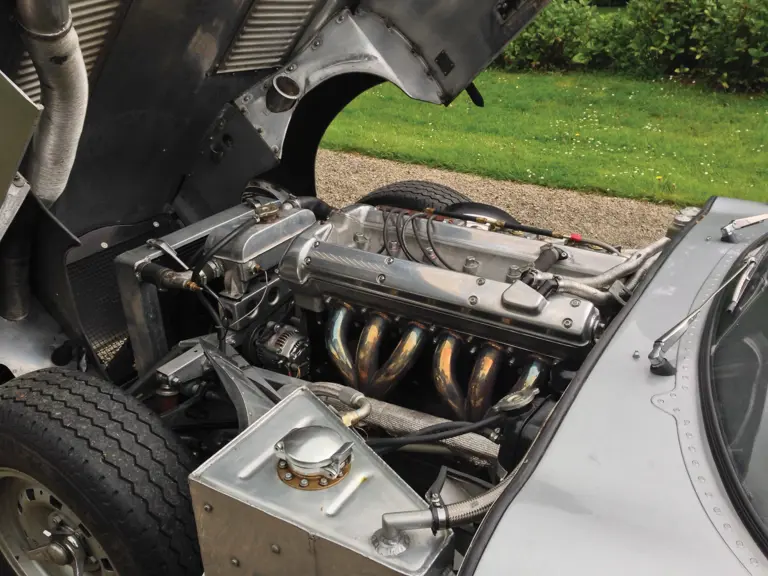
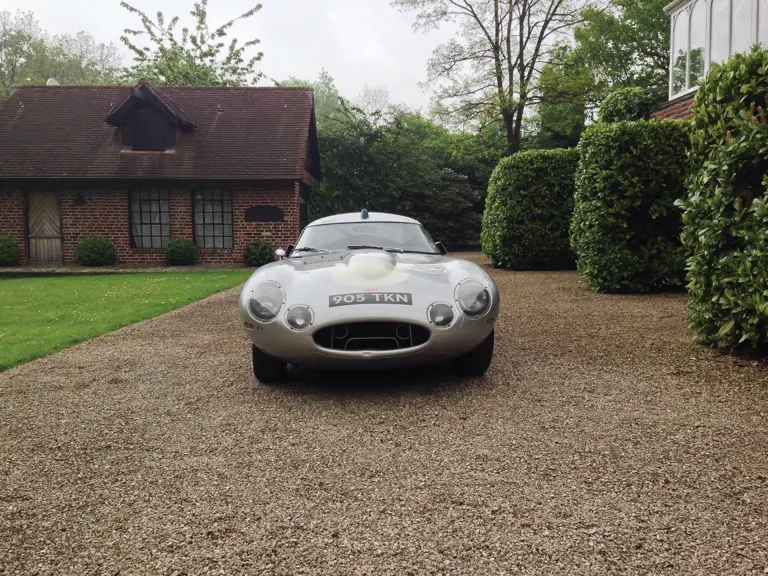
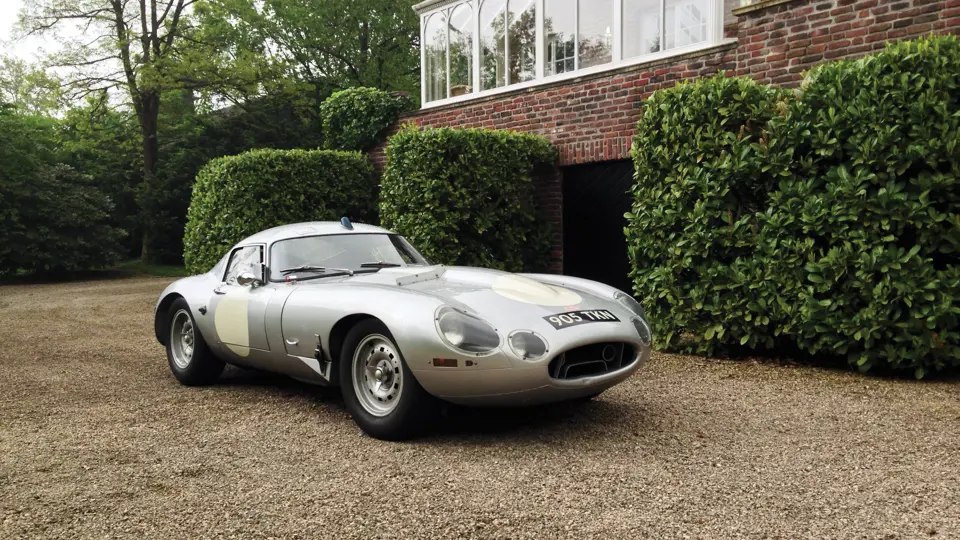
 | London, United Kingdom
| London, United Kingdom
